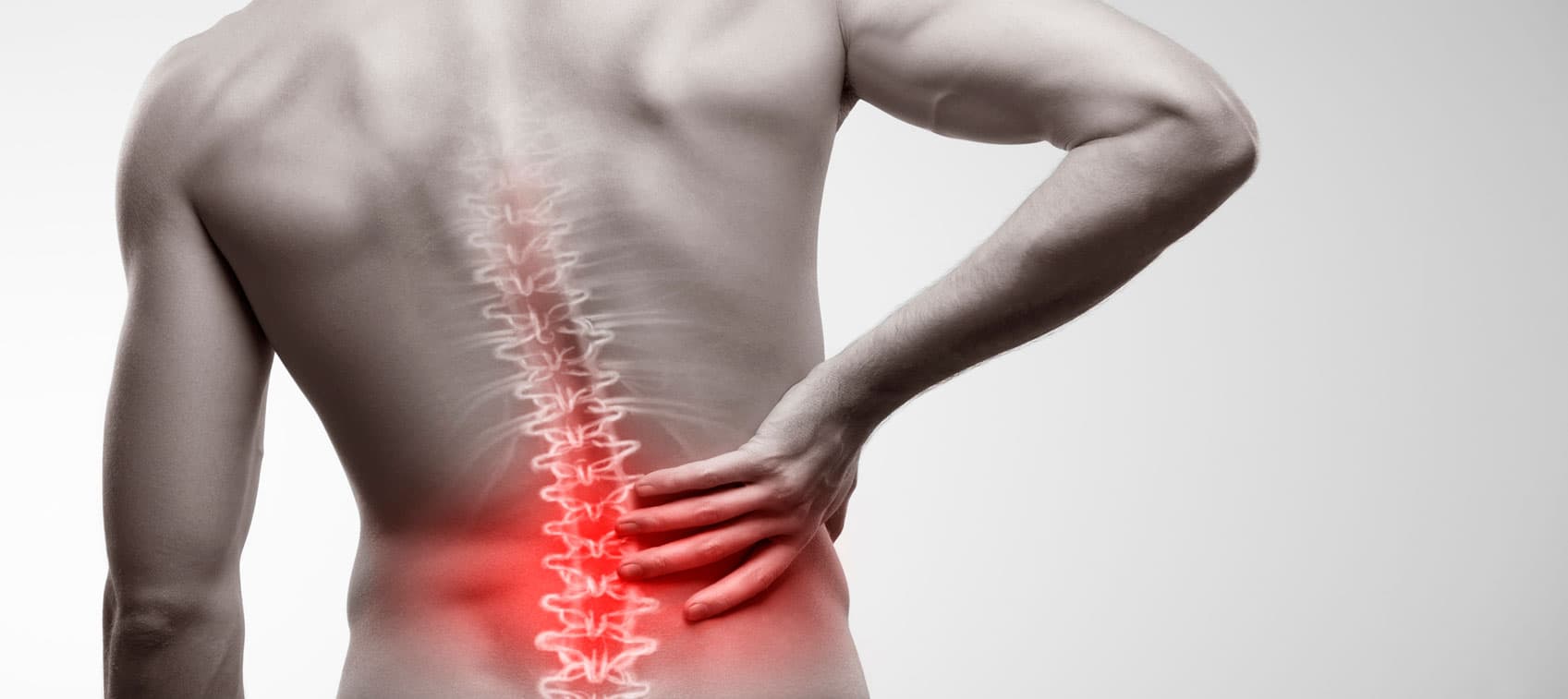
If you are experiencing back pain, you have a lot of company. It’s estimated that as many as eight out of 10 people will struggle with back pain at some point in their lives.
Causes of Back Pain
There are many, many causes of back pain. Some of the most common include overuse, strain, injury, aging, and chronic conditions like arthritis or osteoporosis. Two other major—and often overlooked—causes of back pain are overacidity in the body and poor sleeping position.
Research conducted in Germany has suggested that many cases of chronic low back pain are a result of too much acid. The study involved 82 patients who had back pain for over three months without any spine involvement. For four weeks, they were given a lactose-based alkaline mineral supplement called Basica. At the end of four weeks, the pain rating in 76 of the 82 individuals dropped an average of 49 percent. Not surprisingly, there was a corresponding increase in alkalinity of their blood and other body tissues.
Basica supplements aren’t available in the United States, but other ways to reduce acidity in the body are to increase your consumption of alkaline foods such as most vegetables, beans, peas, nuts, sprouted alfalfa, chia seeds, plain yogurt, herbal teas, and garlic.
Remember, just because a food is acid-forming doesn't make it unhealthy, and I'm not saying that you should avoid all acidic foods. In fact, many acidic foods are necessary for optimum health. It’s just a matter of balance.
Sleep positions can also cause back pain. Stomach sleeping is especially problematic, so try to avoid it.
If you sleep on your side, make sure both your knees are bent and kept together (meaning, do not draw only one leg up close to your chest).
If you have to sleep with one arm under the pillow, then make sure it is fully extended or straightened out, not bent at the elbow and tied in a knot under the pillow.
If you sleep on your back, don't keep your arms above your head, but rather at your sides or on your stomach or chest.
Natural Back Pain Relief
Some research has indicated that antibiotics may cure 40 percent of chronic back pain cases. While interesting, I certainly hope no one is recommending antibiotics for chronic back pain based on this study alone. The world is finally starting to wake up to the dangers of antibiotic overuse.
In reality, there are many ways to achieve relief from back pain naturally, without antibiotics or other drugs. Along with reducing overacidity and adjusting your sleep position, here are other solutions for effective and natural back pain relief:
- Magnet therapy. Doctors have known for years that your body's healing process is triggered by magnetic resonance. When you sleep, your brain sends electromagnetic signals to all of your cells and these signals "fast forward" your self-repair process. Scientists have been trying to harness this speed-healing mechanism for years. One physician—Dr. Dean Bonlie—was successful at doing this. In an effort to rid himself of chronic back pain, he developed a sleep pad with embedded magnets. Although there are dozens of magnetic sleep pads on the market, his is unique because only the energy from the negative field of the magnet reaches the body. Studies have suggested that using the negative field of a magnet can safely promote healing, but that exposing the body to positive magnetic fields can trigger a dramatic increase in the growth of cancer cells in addition to promoting re-growth of cartilage, bone, and nerves. Based on his work to increase negative magnetic fields with sleeping pads, Dr. Bonlie developed the Magnetic Molecular Energizer (MME). MME therapy is provided exclusively at Advanced Magnetic Research Institute (AMRI) centers. Currently, there are three AMRI centers in the United States.
- Chiropractic care. Several years ago, researchers in England released the results of a large study comparing the effectiveness of chiropractic care and medical care for the treatment of severe back pain. The two-year study involved 741 patients ages 18 to 65. The chiropractic patients experienced better results when evaluated at six months after treatment, and the benefit of that treatment was even more evident at the two-year follow-up. If you are experiencing chronic back pain, chiropractic care may be just what you need.
- Prolotherapy is based on the premise that much musculoskeletal pain is due to weakness of ligaments and tendons—the tough, fibrous bands of tissue that connect bone to bone, or bone to muscle. They are the stabilizers of the musculoskeletal system. As long as they are strong and taut, they keep bones, joints, and muscles in place and allow for smooth, pain-free movement. When joints or ligaments become injured, weak, or lax, the surrounding structures become unstable and move out of position. The areas where the ligaments attach to the bones (fibro-osseous junctions) are rich in nerve endings, so the resulting misalignment can be painful, and pain signals may be transmitted to nearby areas. Nerves and blood vessels may be compressed or pinched, and cartilage may be damaged. Prolotherapy involves injecting a mildly irritating solution into weakened ligaments, tendons, discs, and the fibrous capsules of joints. The injected solution causes an inflammatory reaction, which stimulates the body to produce new collagen and in turn strengthens the injured area. As collagen heals, it contracts and pulls the ligaments tighter, making them stronger and more stable. The result is improved function, increased range of motion, and pain relief. To find a doctor in your area who performs prolotherapy for natural back pain relief, visit The American Osteopathic Association of Prolotherapy Regenerative Medicine.
- The Ma Roller is a safe, inexpensive device that resembles a modified rolling pin, and it can provide quick, natural back pain relief. It helps to alleviate spinal compression through self-performed acupressure. You simply lie on the floor and place the roller under your lower back (or wherever you want the pressure). The device relaxes the muscles by providing firm force along acupressure points.
- DMSO (dimethylsulfoxide) is a clear, colorless, slightly oily liquid with a faint smell of sulphur. DMSO on its own can reduce swelling, inflammation, and pain. It can speed the healing process, preserve tissue, and be a godsend to individuals seeking natural back pain relief. Keep a pint of 99.9 percent pure liquid DMSO on hand. DMSO should always be diluted with distilled water. It works best, in the majority of conditions, when it is in 70 to 90 percent concentrations—70 percent DMSO and 30 percent distilled water, or 90 percent DMSO and 10 percent distilled water. Using your fingers or a cotton swab, apply DMSO directly to the skin. Most authorities suggest dabbing DMSO onto an area, but rubbing it on has been shown to improve the absorption time by up to 50 percent. A typical application is 1–3 teaspoons. For acute injuries, apply DMSO every two hours for six to eight hours following the injury. For the next five days or so, apply once every four to six hours.
- Thompson maneuver. This easy exercise helps to support the alignment of the sacroiliac joints—two small joints at the juncture of the hipbones and the triangular bone at the base of the spine (called the sacrum). The key is to do this maneuver correctly and often. Before you begin, identify on your own body the area this maneuver targets. Simply put your hands on your waist with your thumbs toward the front. Move your fingers down until you feel your tailbone. Now, walk a few steps and notice the motion there—these are your sacroiliac joints. Then follow these steps:
- Sitting up straight with your shoulders against a chair or bed, or lying on a flat surface, bend one leg at the knee and grab onto your ankle with the opposite hand (fingers on the front of the ankle, thumb circling and resting under the ankle). Hold the arm straight down to get the proper angle.
- Place your other hand on the bent knee with your thumb on the inside, your little finger on the outside, and your three middle fingers on top of the knee. Let the bent knee drop naturally to the outside.
- Elevate the elbow of the arm holding your knee to the level of the shoulder, so the shoulder and elbow are level. Moving the elbow straight back, pull the knee gently but firmly as far back as it will comfortably go. The lower leg and forearm should be in a more or less straight line. The sacroiliac joint is now in its proper place.
- Hold this position for 10 seconds, then release and repeat the procedure with the opposite leg.
It's impossible to pull too far back—you cannot displace the hip by pulling back. If the joint is already in position, this is still a helpful exercise for increasing circulation and toning the area. For acute injury, repeat this maneuver every hour, or as frequently as possible, for three to four minutes for the first four or five days after injury. Continue to do it at least three times daily as a preventive measure to keep your sacroiliac joints in proper alignment.


